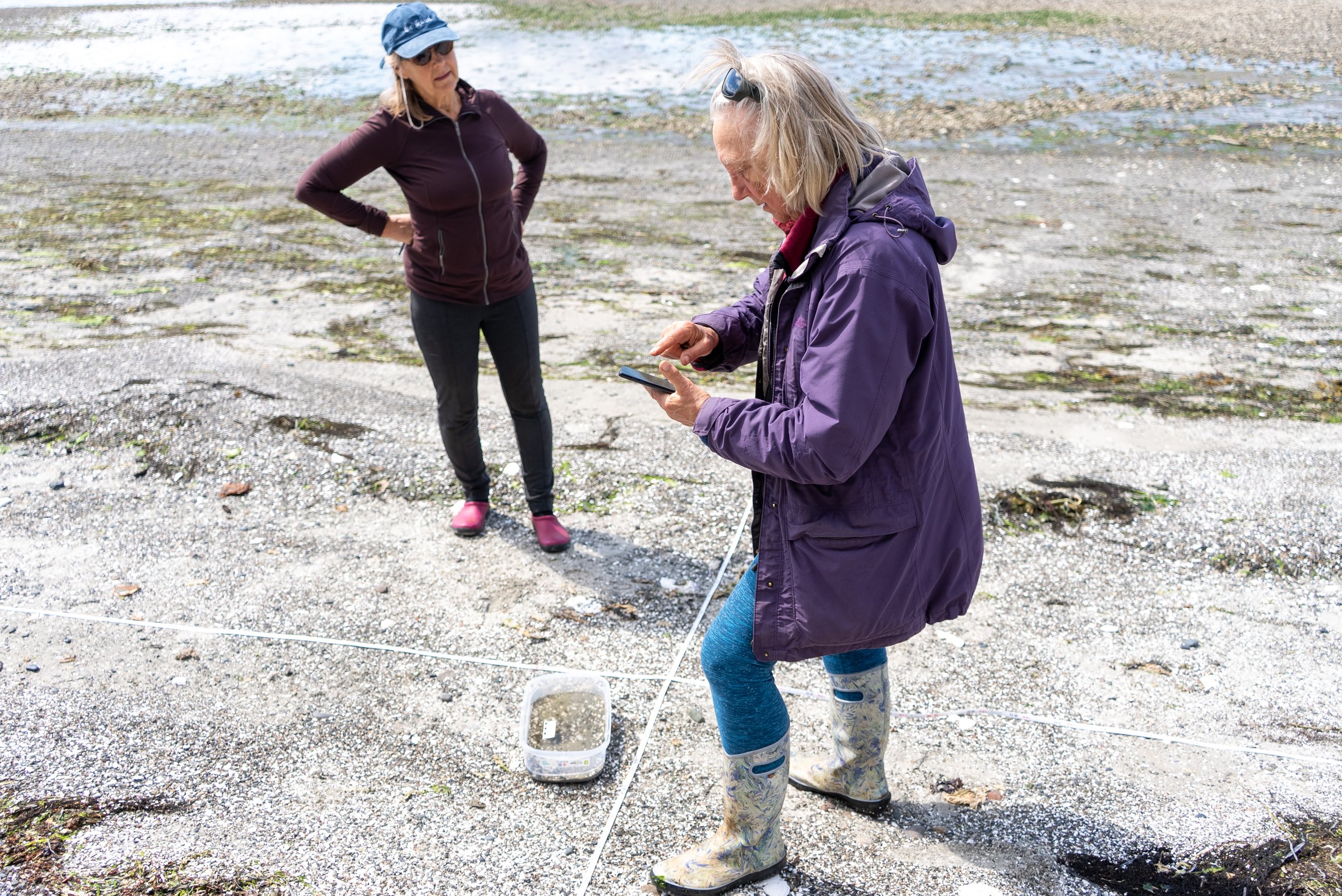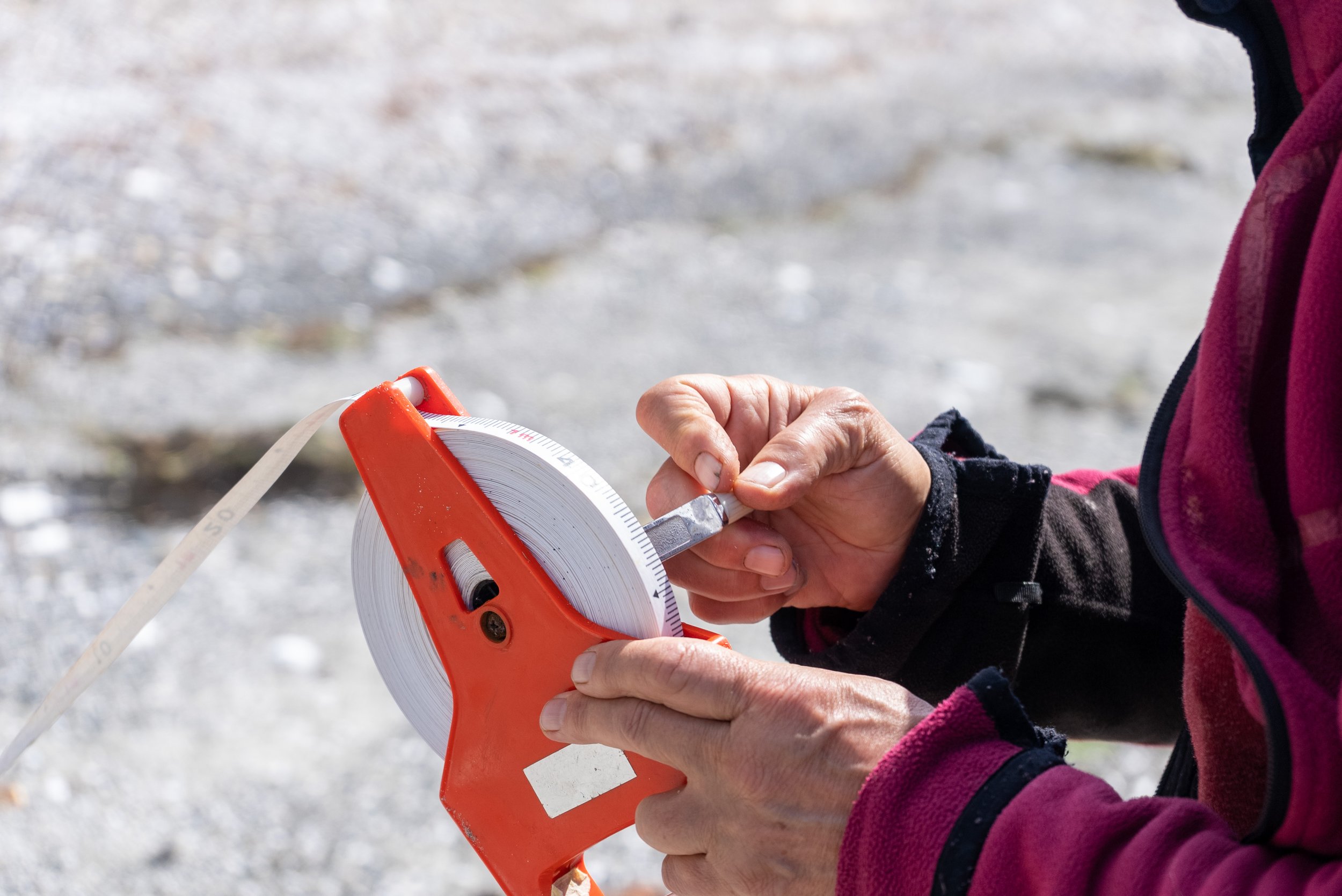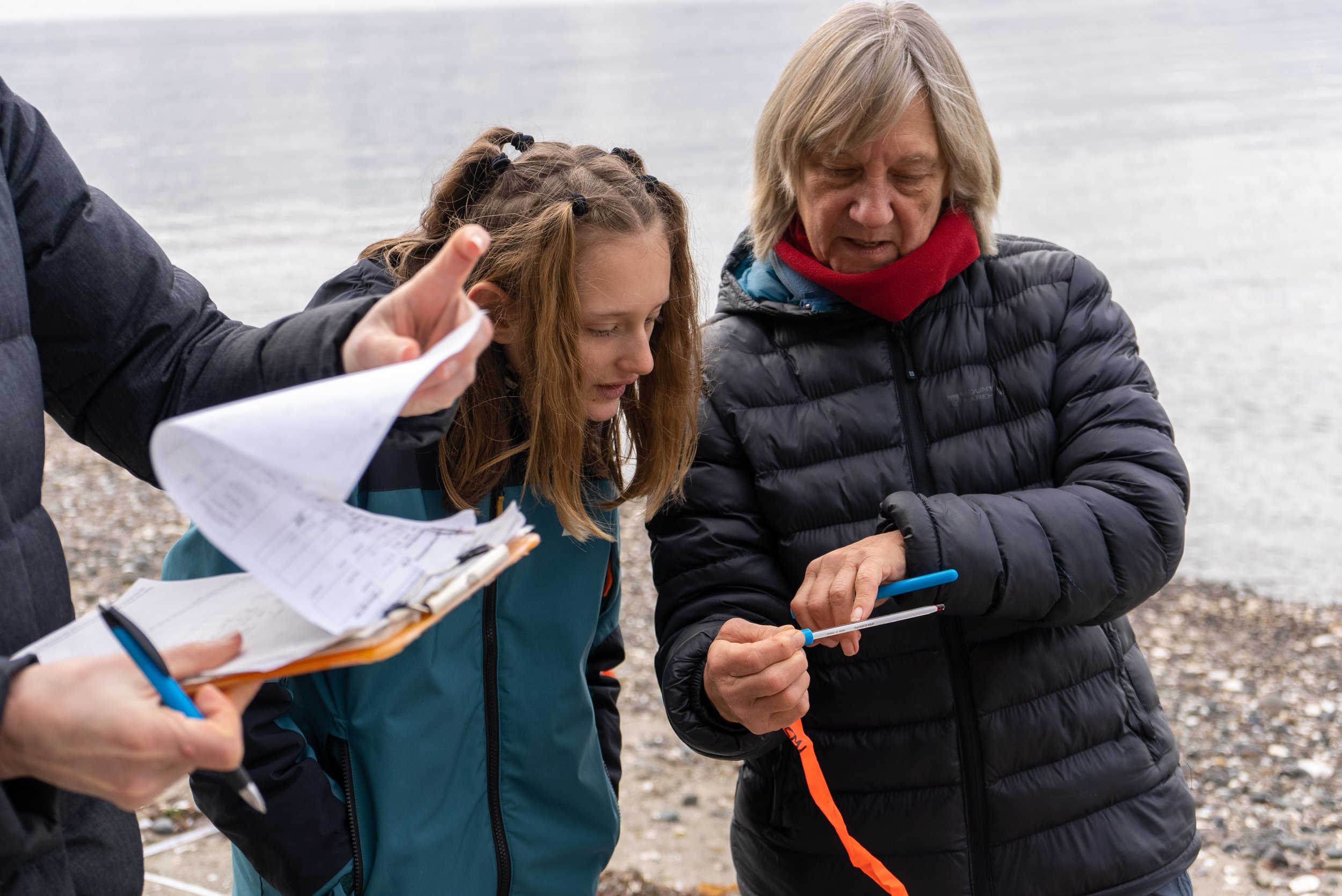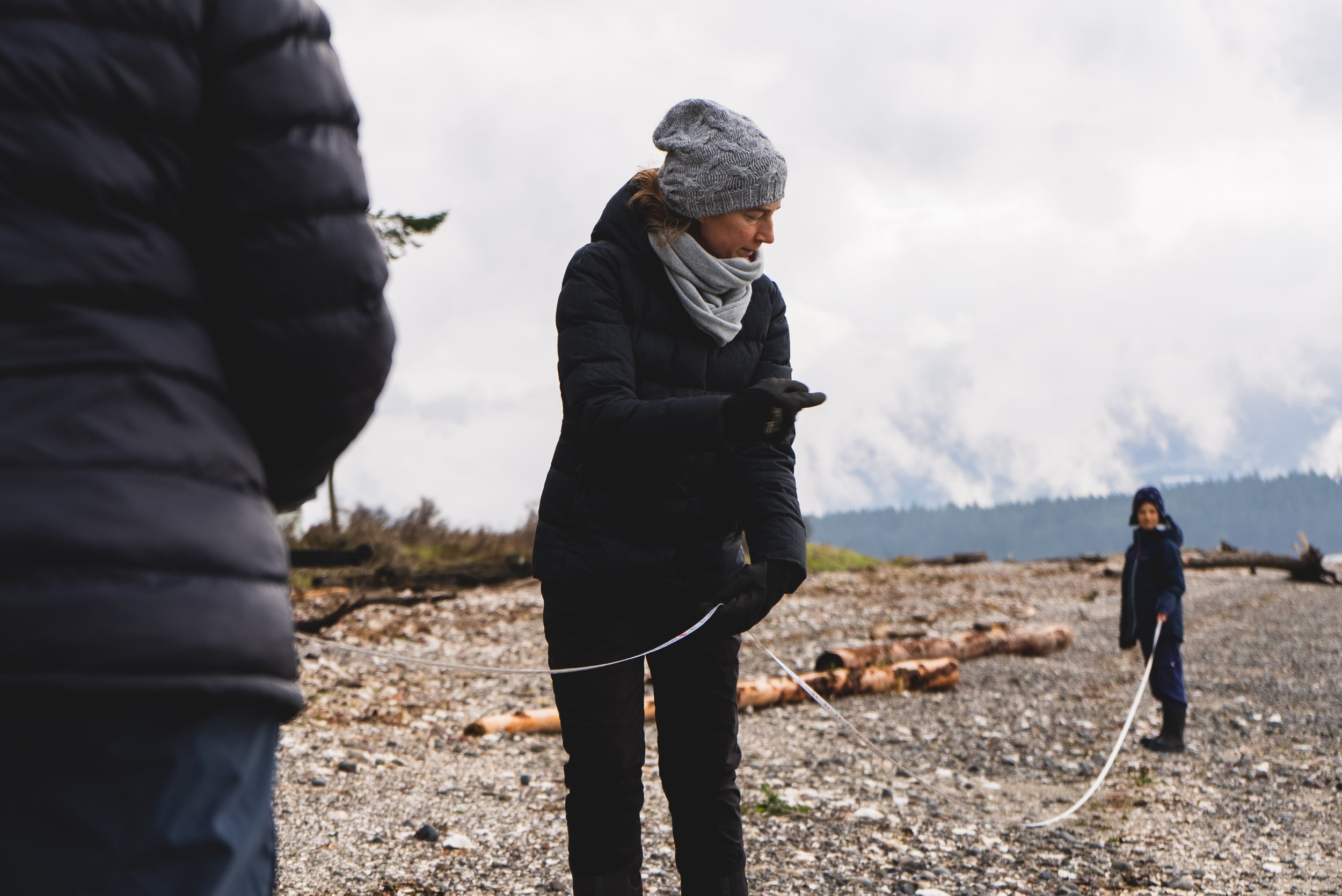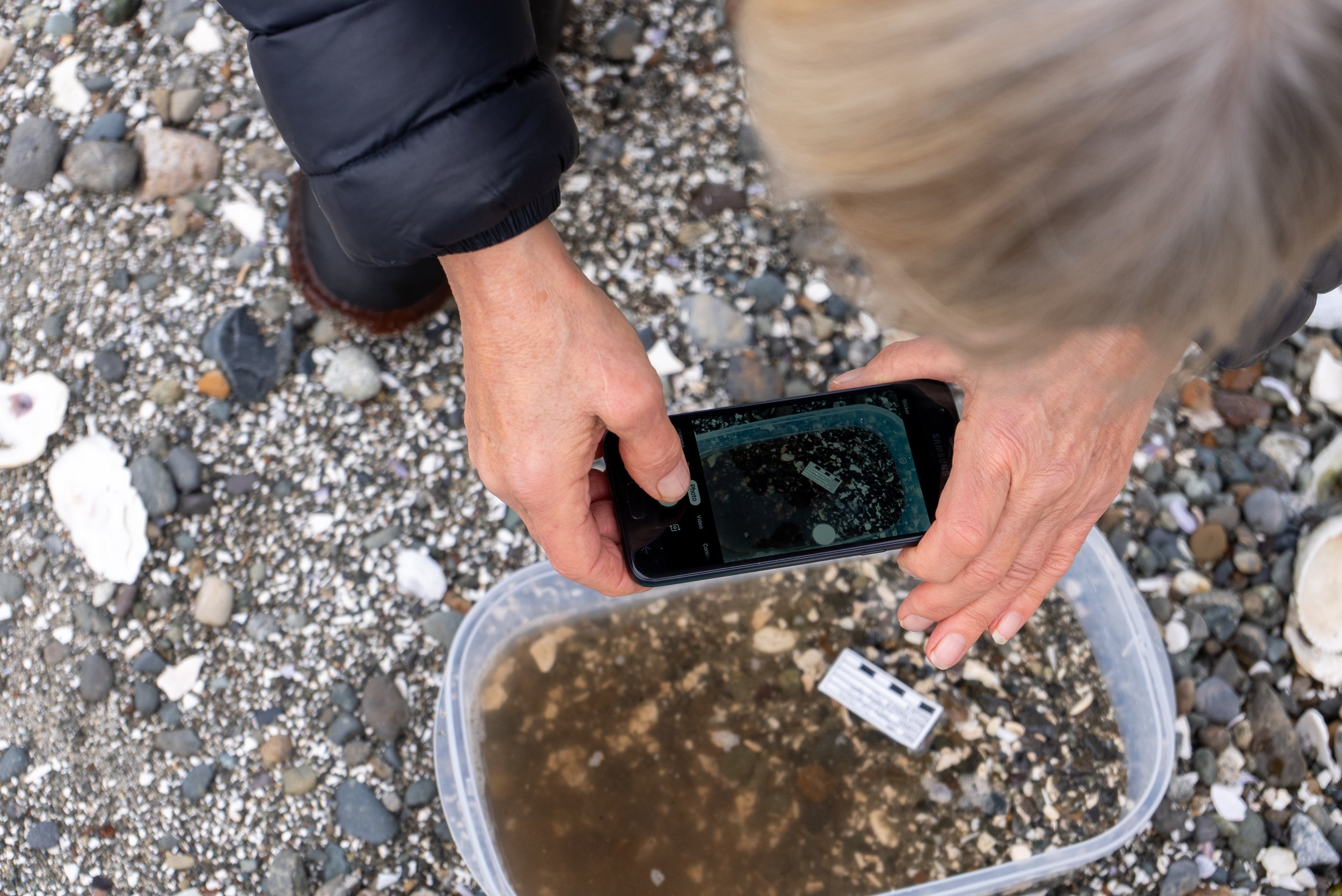Forage Fish Study
Coastlines are changing, and forage fish populations are declining. These small marine creatures form an essential link in our ocean’s food web, providing energy transfer by eating plankton before becoming prey themselves for larger predators such as salmon, seabirds and marine mammals. There is very little information on the spawning location and timing of these key forage fish populations, but Project Watershed and groups of citizen scientists are working hard to close that gap to counter increased threats to forage fish habitats.
CHI volunteers Joanne Wyvill (left) and Robin Walford (right) carry a bucket of sand and sea water that will be sent to Project Watershed’s lab to be tested for forage fish eggs. Photo by Rebecca Benjamin-Carey
Mapping Forage Fish Spawning Locations on Hornby Island
Forage fish gather in shoals which makes them susceptible to threats like habitat destruction and overfishing. Since large predators like humpback whales rely heavily on these fish for survival, it is important that we know as much as possible about them in order to protect the interconnected marine ecosystem.
In 2016, WWF-Canada released a report, Food for All, which warns that for three-quarters of Canadian forage fish fisheries, the status of the fish stock is unknown. The report found that in Canadian fisheries, decisions have and are being made on how many fish can be caught without knowing how many fish there are. Five of the stocks that we do have information on are in the critical zone. - World Wildlife Fund
For several years, CHI has been helping Project Watershed improve its data on forage fish spawning areas by conducting citizen scientists-led surveys on Hornby Beaches. Volunteers have spent many hours on beaches collecting sediment samples from beaches and sending them to Project Watershed’s lab to be analyzed. Conservancy Hornby Island is just one of many citizen scientist partners that Project Watershed is working with to improve our knowledge of forage fish.
How Sampling Works
Volunteers sign up with Project Watershed to collect samples from Campbell River and Comox Valley beaches during beach surveys and “vortexing” events. Citizen scientist volunteers then receive hands-on training on the entire sample collection process including recording environmental data, collecting samples, and preserving them until they reach the testing facility. Beach survey events take place based on the moons during the spawning season. Once eggs are detected, blitz surveys begin!
During blitz surveys, samples are taken from as many suitable beaches as possible to help identify additional spawning habitats in the area. Once the samples have been collected, they are put through a water vortex machine that separates the sand from the eggs, reducing the sample to those elements that are most likely eggs. The reduced sample can then be analyzed under a microscope to see if eggs can be spotted.
Want to learn more about forage fish?
Check out these great resources to learn more about forage fish!
Project Watershed Forage Fish Project
Pacific Sand Lance Habitat Sustainability Model in the Canadian Salish Sea


